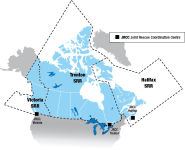KevinB
Army.ca Relic
- Reaction score
- 29,343
- Points
- 1,260
@Kirkhill as far as structures go one of the biggest take aways via OS is the fact the Ukrainian Army has issues operating above the Coy level. At least in a combined arms setting.
They are primarily a Bde Army at this point. Which really means Bn level attacks as far a solid coordination.
The Russians are no better, they started with the BTG - a Battalion Tactical Group, which failed miserably that they eventually started to rebuild a Bde and later Div Army (albeit most units are so FUBAR the Bde’s are closer to the Bn in strength)
As much as I support the Ukrainians, and their sovereignty in the fight against Russia, I don’t think they are a good role model.
Sure they are doing the best they can with the tools they are given, but also very limited training in higher combined operations, it’s a far from optimal position they are in.
We have embraced Maneuver warfare in the West to reduce our casualties, so we aren’t forced into an attritional battle like UKR is forced. Yes we conduct degradation strikes to attrite the enemy, but we do so primarily outside enemy fires.
Yes, most of our enemies then resort to OOTW as they aren’t willing to face the combined arms power directly.
OOTW are significantly less casualty producing than great power wars.
Let’s face it in a few weeks in Bakhmut both sides lost more troops than the entire GWOT did in 2 decades.
A Conventional Modern Army can conduct OOTW, simply be restructuring its ORBAT and potentially replacing some equipment with Theatre Specific items.
A OOTW postured force CANNOT do the same thing and reorient towards Peer/Near Peer combat.
This is how down here we restructured to the XBCT’s as we didn’t need all the Div structures and enablers to conduct COIN. Yea some units even were re-roled for deployments down here.
However after GWOT we returned to a Divisional Army system.
The Russian invasion of Ukraine has brought UAS into a great light, from small Recce units, to larger payload systems and one’s even capable of retrieving casualties for Medivac. As well other uncrewed systems in the seas (above and under) and on the ground. But I don’t think that has changed the premise of warfare other than an area that needs to be developed further as well as counters to them.
The Ukrainians want more NATO Tanks, IFV’s, F-16’s and longer range missiles.
Which is basically to allow them to fight as a NATO military.
We already know we need to be prepared to fight in an A2D2 (Anti-Access Area Denial) World. That was in the cards pre Russian invasion. I recommend you take a look at the OS released copies of the MDO Strategy (my copy isn’t OS or I would put it here)
They are primarily a Bde Army at this point. Which really means Bn level attacks as far a solid coordination.
The Russians are no better, they started with the BTG - a Battalion Tactical Group, which failed miserably that they eventually started to rebuild a Bde and later Div Army (albeit most units are so FUBAR the Bde’s are closer to the Bn in strength)
As much as I support the Ukrainians, and their sovereignty in the fight against Russia, I don’t think they are a good role model.
Sure they are doing the best they can with the tools they are given, but also very limited training in higher combined operations, it’s a far from optimal position they are in.
We have embraced Maneuver warfare in the West to reduce our casualties, so we aren’t forced into an attritional battle like UKR is forced. Yes we conduct degradation strikes to attrite the enemy, but we do so primarily outside enemy fires.
Yes, most of our enemies then resort to OOTW as they aren’t willing to face the combined arms power directly.
OOTW are significantly less casualty producing than great power wars.
Let’s face it in a few weeks in Bakhmut both sides lost more troops than the entire GWOT did in 2 decades.
A Conventional Modern Army can conduct OOTW, simply be restructuring its ORBAT and potentially replacing some equipment with Theatre Specific items.
A OOTW postured force CANNOT do the same thing and reorient towards Peer/Near Peer combat.
This is how down here we restructured to the XBCT’s as we didn’t need all the Div structures and enablers to conduct COIN. Yea some units even were re-roled for deployments down here.
However after GWOT we returned to a Divisional Army system.
The Russian invasion of Ukraine has brought UAS into a great light, from small Recce units, to larger payload systems and one’s even capable of retrieving casualties for Medivac. As well other uncrewed systems in the seas (above and under) and on the ground. But I don’t think that has changed the premise of warfare other than an area that needs to be developed further as well as counters to them.
The Ukrainians want more NATO Tanks, IFV’s, F-16’s and longer range missiles.
Which is basically to allow them to fight as a NATO military.
We already know we need to be prepared to fight in an A2D2 (Anti-Access Area Denial) World. That was in the cards pre Russian invasion. I recommend you take a look at the OS released copies of the MDO Strategy (my copy isn’t OS or I would put it here)
Last edited:





